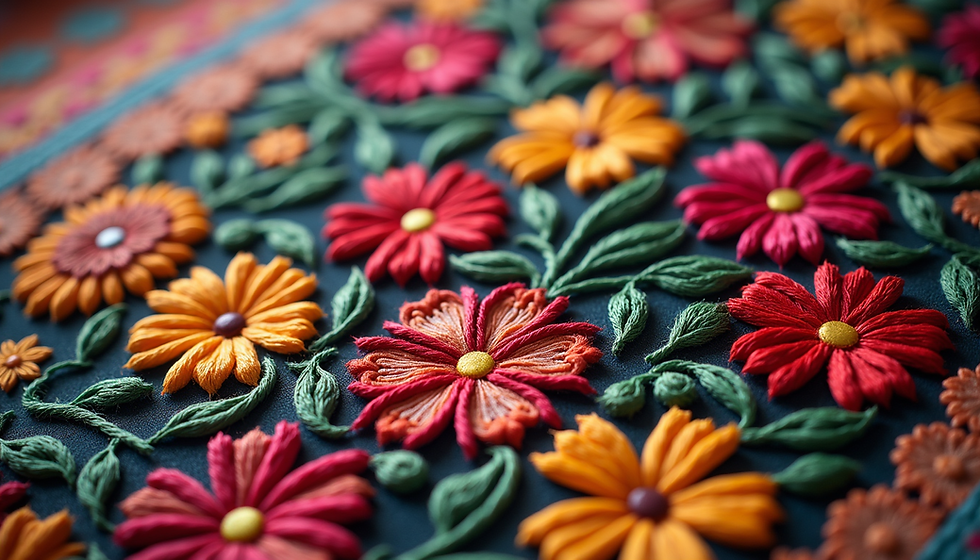- jkartsfoundation
- Dec 5, 2021
- 4 min read
Updated: Feb 14, 2022
Martand Sun Temple - An excellent specimen of Kashmiri architecture

The Martand Sun Temple is dedicated to Surya (the chief solar deity in Hinduism) and represents the antique architecture, craftsmanship, art and skill of Kashmiri Hindus. Martand temple, regarded as one of the many sites of national importance in Jammu and Kashmir and listed as a centrally protected monument, was built by the third ruler of the Karkota Dynasty, Lalitaditya Muktapida, during 725-756 CE, on top of a plateau in Mattan area (originally called Martand or Bhawan) of south Kashmir from where one could view the whole of Kashmir Valley. The temple is now in ruins as it was completely destroyed on the orders of Muslim ruler Sikandar Butshikan in the early 15th century. The ruins and related archaeological findings prove that the temple is an excellent specimen of Kashmiri architecture, a blend of the Gandharan, Gupta, Chinese, Roman, Syrian-Byzantine and Greek forms of architecture. The temple has a collonaded courtyard, with its primary shrine in its centre and surrounded by 84 smaller shrines, stretching to be 220 feet long and 142 feet broad total and incorporating a smaller temple that was previously built.
Martand is considered as the oldest Sun temple in India, whereas, Konark temple, the second oldest, a colossal structure that stands majestic on the seashore on a vast stretch of sandy soil was built in 13th century by King Narasimhadeva and the third one, built in 1026 by King Bhimdev is located at Modhera. The oldest Sun temple, built by Samba son of Krishna in 515 BC, known as Kashyapapur was located in Multan Pakistan, which was destroyed in the 10th century.
The temple is the biggest example of a peristyle in Kashmir, and is complex due to its various chambers that are proportional in size and aligned with the overall perimeter of the temple. In accordance with Hindu temple architecture, the primary entrance to the temple is situated on the western side of the quadrangle and is the same width as the temple itself. The style of construction of the temple and the skill exhibited in it is rare in the history of the architecture world. Though the cities, towns and the ruins belonging to the era of Lalitaditya are not to be found so easily, the remnants of the Martand Sun Temple, which the emperor had built at the pilgrimage place of the same name, and is an example of the architecture skills of the Kashmiri Hindu builders of ancient times. They are praised for their design, beauty, and art. The Martand Sun Temple holds a very high place in the world's great architectural designs and is considered to be not only an example of the Kashmiri architectural skill but also has the importance of having been set up at a very pretty spot.
The ruins of the huge temple stand in a square field with snow-capped mountains as its backdrop. The temple has been built with strong and square limestones and exhibits pillars in Greek pattern. Lalitaditya was not only the founder of a vast empire but also the founder of the art and skill of Kashmiri Hindus for six centuries. The entrance is highly reflective of the temple as a whole due to its elaborate decoration and allusion to the deities worshipped inside. The primary shrine is located in a centralized structure (the temple proper) that is thought to have had a pyramidal top - a common feature of the temples in Kashmir. Various wall carvings in the antechamber of the temple properly depict other gods, such as Vishnu, and river goddesses, such as Ganga and Yamuna, in addition to the sun-god Surya.
The temples of Kashmir had a very distinctive architectural style combining traditional Indian elements with architectural motifs from Gandhara and Persia, which were in turn influenced by Greek architecture. Very typical of the Kashmiri style were pyramidal roofs in two tiers and triangular pediments enclosing trefoil arches. These are features that are very clearly seen in the surviving 10th-century temple at Pandarethan.
King Avantivarman founded the town of Avantipura in the ninth century where he constructed two magnificent temples, “Avantiswamin” dedicated to Vishnu, and “Avantisvara” dedicated to Siva. The temples are not as large as the Martand temple, but the remains of these temples are indicative of well-proportioned and stately structures. The many sculptures that remain in various parts of the ruins and those taken to the Archaeological Museum in Srinagar signify a continuation of some of the gentlest and finest sculptural styles of India. The architecture of these temples takes us back to the glorious days when Kashmir was a key stretch of the ancient silk route and also point towards the fact that architects from Syria and other places would have participated in the construction of the temples.
The Government of India has proposed to develop the site as an important tourist destination with all facilities. With the Department of Archaeology taking its custody, the Martand Sun Temple is now an archaeological monument. As of now, the Temple is on the verge of decay and if the site is restored to its glory and grandeur, it could emerge as one of the oldest pilgrimage tourist destinations in the country.
References and readings:



Comments